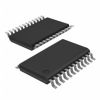CY2SSTV16859: Features: • Differential clock inputs up to 280 MHz• Supports LVTTL switching levels on the RESET# pin• Output drivers have controlled edge rates, so no external resistors are requ...
floor Price/Ceiling Price
- Part Number:
- CY2SSTV16859
- Supply Ability:
- 5000
Price Break
- Qty
- 1~5000
- Unit Price
- Negotiable
- Processing time
- 15 Days
SeekIC Buyer Protection PLUS - newly updated for 2013!
- Escrow Protection.
- Guaranteed refunds.
- Secure payments.
- Learn more >>
Month Sales
268 Transactions
Payment Methods
All payment methods are secure and covered by SeekIC Buyer Protection PLUS.

 CY2SSTV16859 Data Sheet
CY2SSTV16859 Data Sheet







